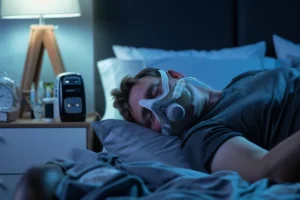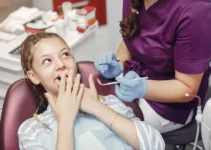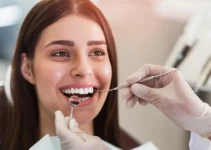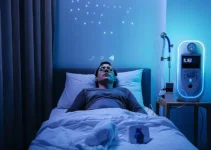Masks for sleep apnoea are essential tools in managing and treating sleep apnoea, a condition characterized by pauses in breathing during sleep. These masks, connected to CPAP (Continuous Positive Airway Pressure) machines, help keep airways open, enabling uninterrupted breathing and a better night’s rest. Understanding the different types of masks and how they work can assist sufferers in finding the right fit and comfort, essential for effective treatment. From full-face masks to nasal pillows, the options are designed to accommodate various patient needs and preferences.
Benefits of Masks for Sleep Apnoea
Improved Sleep Quality
Utilizing a mask for sleep apnoea, such as a CPAP (Continuous Positive Airway Pressure) device, can significantly enhance sleep quality. These masks help maintain an open airway by delivering constant air pressure, thereby reducing the number of apnoeic events during the night. As a result, patients experience fewer interruptions in their sleep cycle, leading to a more restful and profound sleep.
Studies have demonstrated that individuals using CPAP therapy report decreased daytime sleepiness and better overall sleep satisfaction. By minimizing nighttime awakenings and disturbances, these masks allow for more consistent and restorative sleep, which directly contributes to improved cognitive function, mood, and memory.
Incorporating a sleep apnoea mask into a patient’s nightly routine can also aid in normalizing sleep architecture, allowing individuals to spend adequate time in each stage of sleep, including the vital REM (Rapid Eye Movement) stage. This comprehensive improvement in sleep quality can have a profound impact on daily life and overall well-being.
Enhanced Health Outcomes
One of the most significant benefits of using a mask for sleep apnoea is the enhancement of overall health outcomes. Sleep apnoea has been linked to numerous health complications, including hypertension, cardiovascular disease, and stroke. By effectively managing sleep apnoea, patients can reduce their risk of developing these serious conditions.
Regular use of CPAP therapy has been shown to lower blood pressure and improve heart function, offering protective benefits for patients with cardiovascular issues. Additionally, maintaining consistent and adequate oxygen levels during sleep helps to prevent the nocturnal hypoxia that can contribute to cardiovascular strain.
Another critical aspect of improved health outcomes is the reduction in the risk of metabolic disorders such as diabetes. Consistent and restorative sleep supports better glucose metabolism and insulin sensitivity, potentially reducing the incidence or severity of diabetes in sleep apnoea patients.
Increased Energy Levels
Patients who use masks for sleep apnoea often report a marked increase in energy levels throughout the day. This boost in energy stems from the reduction in sleep disruptions and the resultant improvement in overall sleep quality. When the body receives the rest it needs, individuals can perform better in their daily activities and feel more alert and productive.
Additionally, higher energy levels can positively impact other aspects of life, including physical activity and exercise. With enhanced energy, patients are more likely to engage in regular exercise routines, which further contributes to their overall health and well-being.
Moreover, increased energy levels can improve mental clarity and reduce the likelihood of accidents or errors related to fatigue. This is especially important for individuals whose professions require high levels of concentration and focus.
In conclusion, using a mask for sleep apnoea offers numerous benefits, from improved sleep quality to enhanced health outcomes and increased energy levels. For more insights into managing sleep apnoea and other related conditions, be sure to explore our other articles and resources.
Types of Masks for Sleep Apnoea
Sleep apnoea is a serious condition that affects millions of individuals worldwide. One of the most effective treatments for obstructive sleep apnoea (OSA) is the use of Continuous Positive Airway Pressure (CPAP) therapy, which requires the use of a CPAP mask. Choosing the right type of mask is crucial for effective therapy and patient comfort. Here, we present the different types of CPAP masks: nasal masks, full face masks, and nasal pillow masks. Each type of mask has its own unique advantages and is suited for different user needs. Selecting the right mask can significantly improve the quality of sleep and the overall effectiveness of CPAP therapy. Understanding the specific characteristics of each mask type will help patients make informed decisions.
Nasal Masks
Nasal masks cover the nose from the bridge to the upper lip, forming a seal to deliver the pressurized air from the CPAP machine. These masks are among the most commonly used for CPAP therapy due to their balance between comfort and efficiency. Nasal masks are ideal for patients who move a lot during sleep, as the design allows for a more secure fit.
Studies indicate that nasal masks are highly efficient in delivering CPAP therapy for mild to moderate OSA. They offer lower resistance to airflow and are generally more comfortable for side sleepers. However, they might not be suitable for those who breathe through their mouth at night.
Advantages of nasal masks include:
- Better airflow concentration through the nasal passages
- Good for active sleepers
- Typically more comfortable than full face masks
However, patients with nasal congestion or allergies may find these masks challenging to use.
Full Face Masks
Full face masks cover both the nose and mouth, providing coverage from the bridge of the nose to below the lower lip. These masks are essential for patients who breathe through their mouth while sleeping or suffer from frequent nasal congestion.
The design of full face masks ensures that air is delivered effectively no matter how the patient breathes. They are beneficial for those with severe OSA as they provide a more comprehensive seal and prevent air leakage. The effectiveness of full face masks in managing OSA is well-supported by clinical research.
Benefits of full face masks include:
- Ideal for mouth breathers
- Better for patients with nasal obstructions
- Ensures maximum air delivery
However, these masks can be bulkier and may require patients to sleep on their back more than they would prefer.
Nasal Pillow Masks
Nasal pillow masks are the smallest and least intrusive type of CPAP masks. They consist of small cushions that fit directly into the nostrils, providing a direct flow of pressurized air. Nasal pillow masks are especially popular among patients who feel claustrophobic with larger masks and require minimal contact with their face.
These masks are typically preferred by patients with mild to moderate OSA. They offer a greater range of motion during sleep and are ideal for those who wear glasses or like to read before sleep, as they offer an unobstructed field of vision. Advantages of nasal pillow masks include:
- Minimal mask bulk
- Unobstructed vision, great for those who wear glasses
- Less contact with the face, reducing the risk of skin irritation
However, these masks might not be suitable for high-pressure settings and can cause nasal dryness or discomfort for some users.
Understanding the different types of CPAP masks and their unique features can greatly enhance the treatment experience for OSA patients. For more detailed information on managing sleep apnoea and other innovative dental solutions, read our other articles.
How to Choose the Right Sleep Apnoea Mask
Choosing the right sleep apnoea mask can be a crucial step in effectively managing obstructive sleep apnoea (OSA). With numerous options available, it can be overwhelming to make a decision. However, by taking into account specific factors such as sleep position, comfort, fit, and consulting with a healthcare provider, you can find the most suitable mask for your needs.
Here are some essential tips to guide you through the selection process:
Consider Your Sleep Position
The position you typically sleep in plays a significant role in determining the type of mask that will work best for you. Sleep apnoea masks come in various designs, each catering to different sleep positions. For instance, if you are a side sleeper, a mask that remains stable when you move is essential to prevent air leaks. In contrast, if you sleep on your back, a mask with a secure seal can help in maintaining consistent airflow.
A common recommendation is to try:
- Nasal Pillow Masks: Ideal for side sleepers due to their minimalistic design and fewer contact points on the face.
- Full Face Masks: Suitable for back sleepers who require a secure seal and stable airflow throughout the night.
Evaluate Comfort and Fit
Comfort and fit are paramount when selecting a sleep apnoea mask. A mask that is uncomfortable or doesn’t fit properly can lead to poor adherence to therapy. Make sure to choose a mask that feels comfortable against your skin and does not cause any irritation.
Consider the following factors for a better fit:
- Cushion Material: Look for masks with soft, hypoallergenic cushions that reduce skin irritation.
- Headgear Adjustability: Adjustable straps ensure a snug fit and can be tailored to your head size.
Remember that the right fit should provide a sealed airway while allowing you to move freely during sleep.
Consult with a Healthcare Provider
It’s crucial to consult with a healthcare provider when choosing a sleep apnoea mask. A professional can provide personalized recommendations based on your medical history, severity of OSA, and specific needs.
During your consultation, be sure to:
- Discuss Different Options: Review various mask types and their benefits with your provider.
- Get a Proper Fitting: A proper fitting session can help identify potential issues with masks and adjust them to your comfort.
Consulting with a healthcare provider ensures that you receive a sleep apnoea mask that is both effective and comfortable, promoting better sleep quality and overall health.
If you found this article helpful, be sure to check out our other articles on managing obstructive sleep apnoea and improving sleep quality!
Understanding the Role of Masks in Managing Sleep Apnoea
Masks designed for the treatment of sleep apnoea are crucial in ensuring better night’s rest by preventing airway blockages. Here are some common questions about how these masks function and their benefits.
How do masks help in treating sleep apnoea?
Masks, when used with CPAP (Continuous Positive Airway Pressure) devices, deliver air at a prescribed pressure to keep the airways open during sleep. This mechanism prevents the interruptions in breathing that are characteristic of obstructive sleep apnoea, thereby improving the quality of sleep and overall health.
Are there different types of masks for sleep apnoea, and how do I choose the right one?
Yes, there are several types of masks, including nasal masks, full-face masks, and nasal pillow masks. The right choice depends on your breathing habits, comfort preferences, and the severity of your condition. It’s recommended to consult with a healthcare provider to get a mask that fits well and meets your specific needs.

My name is Salman Kapa, a 73-year-old expert in bone regeneration and dental implantology. With decades of experience in the field, I am dedicated to advancing our understanding of oral health and hygiene. Through my research and writing, I aim to contribute to the development of innovative solutions in dental care.




